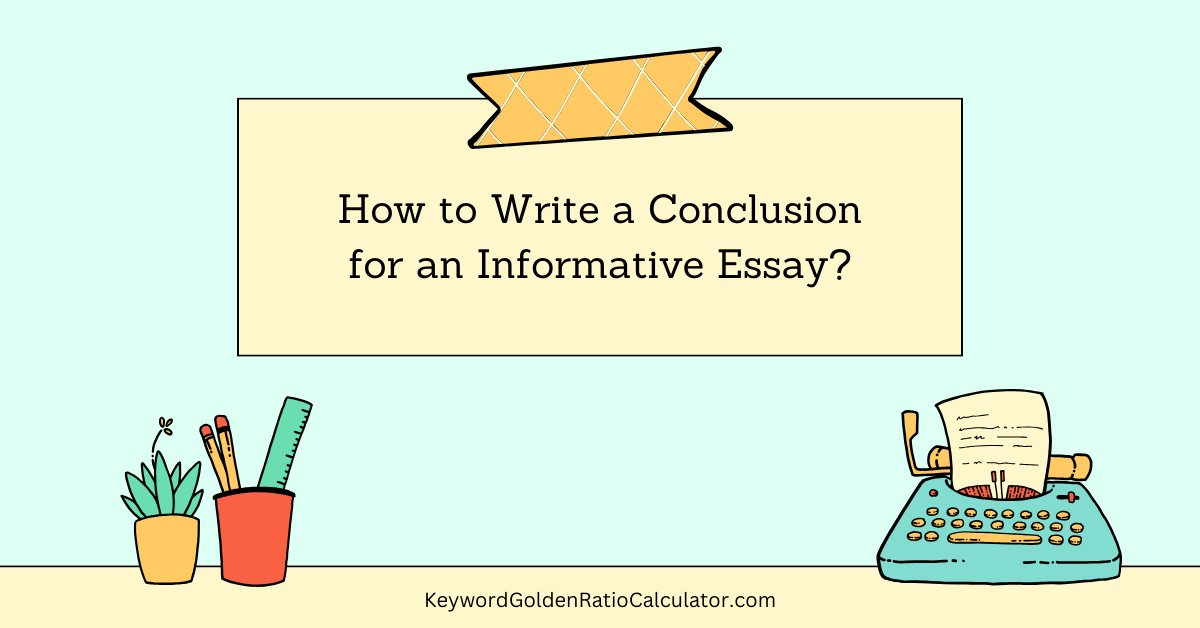When it comes to writing an essay, constructing a well-thought-out conclusion is as important as penning an engaging introduction and informative body content.
Many struggle to write compelling conclusions that leave a lasting impact.
Read on for a user-friendly guide on how to write a conclusion for an informative essay, complete with meaningful examples.
Why Are Conclusions Important?
Writing an effective conclusion is a critical part of the essay-writing process. It serves to:
- Bring closure to your piece,
- Summarize your main points,
- Leave a lasting impression on your readers, and
- Encourage further thought or action.
Just like a chef artfully garnishes a meal, a great conclusion adds a sense of completeness, making your essay well-rounded and satisfying for your readers.
Understanding What a Conclusion Should Include
Before you start crafting your conclusion, it’s essential to understand its components.
An effective conclusion should include the following key elements:
1. Restatement of Thesis
This isn’t about mindlessly repeating your thesis statement.
Instead, rephrase it, presenting it from a new angle, informed by the evidence or arguments you’ve provided in the body of the essay.
Example: If your thesis was, “Sustainable energy sources are the future”, you might rephrase it in the conclusion as, “With their plentiful benefits and decreasing costs, sustainable energy sources have firmly staked their claim as the powerhouses of the future.”
2. Summary of Main Points
Briefly recap the main points or arguments from your essay. Keep it short, simple, and straight to the point. Remember, this is a summary, not a detailed repetition.
Example: “From reducing carbon footprint, saving costs in the long run, to fostering energy independence, sustainable energy sources present a compelling case.”
3. Final Thought
End with a final thought, takeaway, or tie-in to the bigger picture. This might be an interesting fact, a question, a recommendation, or a call to action to engage your readers further.
Example: “Discover the power of sustainable energy for yourself. What small step can you take to make a big difference to our planet?”
Steps to Writing an Effective Conclusion
So, how do you write a conclusion that encompasses all these elements?
1. Draft Your Conclusion Early
Interestingly, drafting an initial version of your conclusion before you start writing the main body of the essay can help steer your thinking and writing process.
This preliminary draft will evolve and be revised as your essay takes shape.
2. Review and Revise
After finishing your essay, review your conclusion. Ensure it aligns with the information or arguments presented in your essay. Don’t introduce any new information.
3. Measure Impact
The conclusion of your essay should evoke thought, inspire action, or solidify your essay’s overall impact.
It should resonate with your readers, compelling them to reflect on the topic further.
4. Seek Feedback
Don’t hesitate to seek feedback. A fresh perspective can often pinpoint areas for improvement or validate the strength of your conclusion.
Conclusion
A well-crafted conclusion leaves a lasting impression, reinforcing your main ideas.
It is your final opportunity to engage, inspire, and make a lasting impact on your readers.
Remember, a good essay is not just about the information it provides, but the emotions it stirs, the thoughts it invokes, and the actions it inspires.
So, get out there, start writing, and let your conclusions be your crowning glory!
“The end of an essay should therefore convey a sense of completeness and closure as well as a sense of the lingering possibilities of the topic.” – Harvard Writing Center

